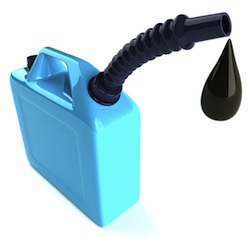 With only two days left in 2010, I thought “The Impending World Energy Mess” was only fitting for review as we head into 2011. It is also fitting for another reason, it ties nicely into the story I brought you earlier this week, $5 Gas Prices on the Horizon. The authors, Dr. Robert L Hirsch, Dr. Roger H. Bezdek, and Robert M. Wendling, bring you decades of experience in energy from economics to oil to technologies. In the book, they lay out their premise that the most serious energy mess facing the world today is the impending decline in world oil production. It just so happens that it is taking place at the same time energy use is all an all-time high and continues to grow.
With only two days left in 2010, I thought “The Impending World Energy Mess” was only fitting for review as we head into 2011. It is also fitting for another reason, it ties nicely into the story I brought you earlier this week, $5 Gas Prices on the Horizon. The authors, Dr. Robert L Hirsch, Dr. Roger H. Bezdek, and Robert M. Wendling, bring you decades of experience in energy from economics to oil to technologies. In the book, they lay out their premise that the most serious energy mess facing the world today is the impending decline in world oil production. It just so happens that it is taking place at the same time energy use is all an all-time high and continues to grow.
The authors write, “The warming signs include the six-year long plateauing of world oil production, the escalation of oil prices, and the analyses of a number of highly trained professionals and competent organizations.”
They authors don’t use the term “peak oil” because world oil production, they say, has been and is likely to stay on the current fluctuating world oil production plateau for a few more years before the onset of production decline.
So what’s the problem you ask? We have hoards of alternatives? According to the authors, the realities of these alternatives are that they are “very costly and insufficient to satisfy our overall energy needs, let alone our liquid fuel needs.” The energy sources they discuss are numerous including biofuels, solar, wind, nuclear, natural gas, hydrogen, electric vehicles, oil shale, coal to liquids, and more. But let’s delve into this deeper using biofuels, more specifically, corn ethanol as an example.
When determining the validity of an energy source, the authors used two measurements: Energy Return on Energy Invested (EROEI) and Liquid Fuel Return on Investment (LFROI). In terms of EROEI of corn ethanol, the authors write that it is poor and that some even claim it is negative.
 Here is an example the authors use: “Ethanol advocates describe ethanol production in billions of gallons per year. That measure yields a very large number, which is impressive in marketing and politics. For example, the U.S. has mandated production of 35 billion gallons of ethanol per year by 2017, which is a seemingly huge number until it is translated to millions of barrels per day, which is the measure used in dealing with oil production and consumption.”
Here is an example the authors use: “Ethanol advocates describe ethanol production in billions of gallons per year. That measure yields a very large number, which is impressive in marketing and politics. For example, the U.S. has mandated production of 35 billion gallons of ethanol per year by 2017, which is a seemingly huge number until it is translated to millions of barrels per day, which is the measure used in dealing with oil production and consumption.”
“Do the calculation. There are 365 days in a year and 42 gallons in a barrel, and the energy content of ethanol is about 60 percent of gasoline, when properly compared. This means that 35 billion gallons of ethanol per year translates to about 1.4 million barrels per day of oil on an energy equivalent basis. Since the U.S. consumes about 20 million barrels per day of oil, that seemingly huge ethanol target boils down to about a 7% contribution in the U.S. We need what we can get, as long as it makes energy, economic and environmental sense, which corn-ethanol does not.”
The authors are more causistically optimistic about biomass-to-liquids and they ultimately write that in the case of renewable energy as a solution, “We hope that current and future research will bring forth attractive renewable electric power and liquid fuel production options. They are just not here today.”
Throughout the book, the authors take us through the research of how they know oil production is on the decline and what we do have is getting harder to drill, and then they take us through the current alternative technologies from oil to alternative energy, walk us through government intervention/mitigation strategies and then predict the winners and losers.
So, now that we know all of this what is the ultimate solution? Preparation now for a future will less oil.

